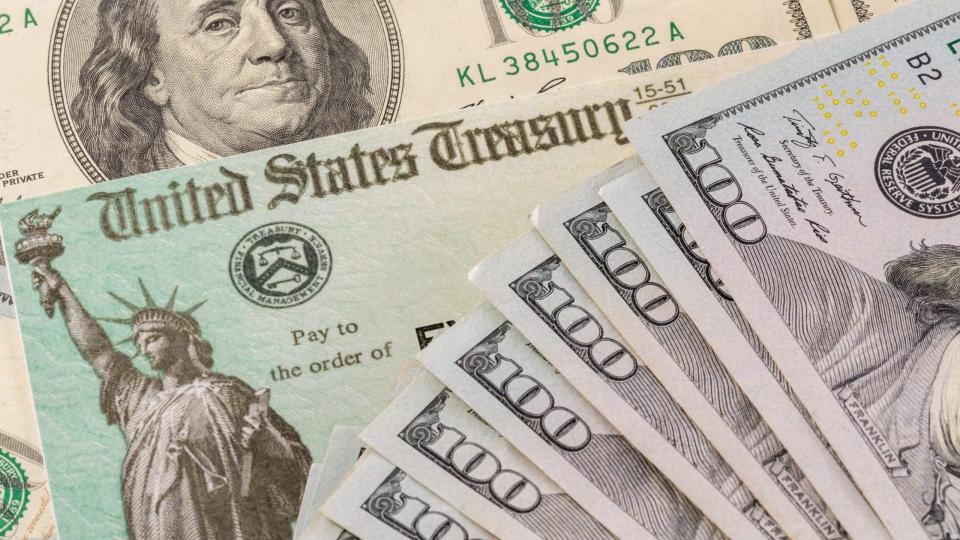Here’s How Stimulus Money Changed Everything in 2021

The $1.9 trillion American Rescue Plan represented one of the greatest transfers of wealth in history. The legislation provided $1 trillion for programs administered by the Treasury, $700 billion of which had been transferred from government coffers into the checking accounts of citizens in the first six months after President Biden signed the bill into law.
It included more than $450 billion paid directly to individuals and households in the form of:
170 million Economic Impact Payments worth more than $400 billion
More than 106 million Child Tax Credit (CTC) payments worth more than $46 billion
More than 1 million Emergency Rental Assistance payments worth more than $5 billion
Keep in mind, that outlay doesn’t even include the $240 billion that the Treasury gave to state, territorial, local, and Tribal governments for their own pandemic relief and stimulus programs. An effort and expenditure so gargantuan could not, of course, take place without having an equally massive impact on the economy as a whole.
Looking back on 2021, here’s what we learned.
See: The Stimulus Paperwork You Need To Keep for Tax Season
Find: 8 Surprising Facts About Stimulus Checks in 2021
The Stimulus Supercharged an Already Recovering Economy
According to the U.S. Treasury, the six months that followed President Biden’s signing of the American Rescue Plan saw a flurry of economic activity that was both directly and indirectly caused by the stimulus. The Treasury’s six-month report stated that 3 million jobs had been created, with job creation averaging 765,000 in the last three months of the first half of 2021.
Much of that growth, the Treasury reported, could be credited not to direct cash payments, but to business-support stimulus programs. Specifically, the Employee Retention Tax Credit gave businesses up to $28,000 per employee to prevent costly staff turnover.
See: Stimulus 2022: You Could Be Eligible for This $2,000 Tax Break
All That Cash Poured Into 2 Very Uneven Streams — and Prices Rose
The billions of dollars paid out as checks and direct deposits gave millions of Americans newfound spending power. It’s been well-documented that the tsunami of consumer demand caused prices to rise throughout the spring and summer — and that same inflation remains a thorn in the side of the holiday shopping season as 2021 draws to a close.
Less is written about why.
The pandemic forced a dramatic shift toward the purchase of physical goods and away from the purchase of face-to-face services. According to the Economic Policy Institute, that dynamic did not change — at least not enough — when the checks started arriving in March despite the millions of vaccinations that had been administered across the country.
As billions and billions of dollars poured into the goods sector, surging demand sent prices up and placed intense pressure on the shipping and logistics operations that serve that sector. That pressure slowed global supply chains to a crawl, which sent prices up even further and erased any hope about inflation being a passing phase.
Find: Stimulus Update: Your November Child Tax Credit May Need to be Paid Back – Here’s Why
Household Savings Soared
Desperation forced three out of four Americans to spend their first stimulus check from the CARES Act on household necessities in the spring of 2020, when unemployment was as high as national uncertainty and economic anxiety. According to the Peter G. Peterson Foundation, however, things had improved enough by the second round of payments at year’s end that only 22% had to spend their checks on immediate needs. By the time the American Rescue Plan delivered the biggest direct payments yet in March 2021, more than four out of five recipients were able to use it to pay down debt or — in the case of one in three Americans — squirrel it away into savings.
According to Time’s Next Advisor, household savings skyrocketed from 12.7% in March to a record-high 32.2% in April after checks had been mailed and deposits had been made. The previous record was 17.3% set in May of 1975.
It wasn’t just household savings. Northwestern Mutual’s 2021 Planning & Progress Study showed that retirement savings were up 13% over the previous year. But the good news was belied by an unfortunate reality. By the end of August, according to CNBC and Oxford Economics, it was clear that the bulk of the $4 trillion America had added to its collective savings was concentrated among the wealthy.
See: Jaw-Dropping Stats About the State of Retirement in America
Corporations Didn’t Make Out So Bad, Either
Despite the massive spike in savings, the stimulus payments triggered a consumer spending bonanza. All that spending, of course, was a boon for the people who do the selling.
In the second quarter of 2021, strong demand and rising prices pushed U.S. corporate profits to a record high. After rising at a pace of 5.1% in the first quarter, according to Reuters, corporate profits soared by $234.5 billion — a 9.2% quarterly rate — to a record $2.8 trillion in Q2.
The jolt was felt economy-wide. After rising by 6.3% in the first quarter, America’s GDP rose by another 6.6% in the second as the economy roared back to life.
More From GOBankingRates
Social Security 2022: How the COLA Will Increase Benefits for the Average Senior Couple
This Free Tool Automatically Checks for the Best Deal on Amazon
This article originally appeared on GOBankingRates.com: Here’s How Stimulus Money Changed Everything in 2021

 Yahoo Finance
Yahoo Finance 